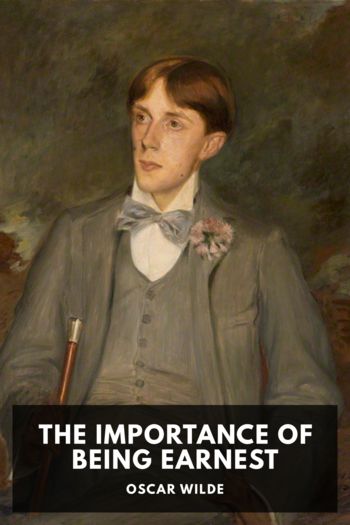Living History, Unknown [books to read in your 20s female TXT] 📗

- Author: Unknown
Book online «Living History, Unknown [books to read in your 20s female TXT] 📗». Author Unknown
The worst instance came during an official visit to Israel in the fall of 1999, when I attended an event as First Lady with Suha Arafat, wife of the Palestinian leader. Mrs.
Arafat spoke before me in Arabic. Listening to an Arabic-to-English translation through headphones, neither I nor other members of our delegation―including U.S. Embassy staff, Middle East experts and respected American Jewish leaders―heard her outrageous remark suggesting that Israel had used poison gas to control Palestinians. When I went to the podium moments later to deliver my remarks, Mrs. Arafat greeted me with an embrace, a traditional greeting. Had I been aware of her hateful words, I would have denounced them on the spot. The New York tabloids ran photos of me receiving a kiss on the cheek from Suha Arafat, with accompanying stories about her remarks. Many Jewish voters were understandably upset with Mrs. Arafat’s comments and disappointed that I had not taken the opportunity to disavow her remarks. My campaign eventually overcame the fallout, but I had learned a hard lesson about the hazards of merging my role in the international diplomatic arena with the complexities of local New York politics.
Throughout the campaign, there was a humorous disconnect between the national view of the race and the way it was covered in New York. National columnists and cable pundits routinely predicted that the “carpetbagger” issue would kill me, and I would drop out of the race. In their frequent commentaries, they also admonished me for refusing to speak to the press. This was a source of great amusement for my staff, because I routinely granted interviews to the New York reporters covering the race. My relations with the press improved with time under the tutelage of my communications director, Howard Wolfson. Howard had worked for Nita Lowey and Chuck Schumer and understood the rough and tumble of dealing with the New York media. He became a familiar and eloquent presence on television, speaking for the campaign. With his help, I eventually learned to relax and let down my guard with the press, and I came to enjoy the daily interactions with reporters assigned to cover my campaign.
As unnerving as it was to find my footing in the shifting sands of New York politics, I had no plans to drop out of the race. I simply tried to stay focused on getting to know the people of New York and letting them get a sense of me. Despite the state’s size, I was determined to run a grassroots campaign rather than communicate to prospective constituents solely through paid media. While radio and television publicity is important and necessary, nothing substitutes for face-to-face conversations in which the candidate often learns more than the voters do.
My goal was to visit all sixty-two counties, and for more than a year I traveled the state in a Ford conversion van―nicknamed the HRC Speedwagon by the press―with my longtime aide Kelly Craighead and Allison Stein, an energetic campaign staffer. I stopped at diners and cafes along the road, just as Bill and I had done during his campaigns. Even if only a handful of people were inside, I’d sit down, have a cup of coffee and talk about whatever topics were on their minds. Campaign professionals call this “retail politics,”
but to me, it was the best way to stay in touch with people’s everyday concerns.
This hectic existence was a far cry from life in the White House. Bill and I had moved some of our belongings into the house we had purchased on the end of a cul de sac in Chappaqua, less than an hour north of New York City, but I did not have much free time to spend there. The place was usually empty except for the required contingent of Secret Service agents, who set up their command post in an old renovated barn in the backyard.
I rarely got to sleep before midnight, and I usually hit the road by 7 A.M. If there was time, I would stop for muffins, egg sandwiches and coffee at Lange’s, a great family delicatessen down the road from my house.
But instead of feeling tired, I found that I drew energy from the campaign itself. Not only was I getting a nonstop crash course in New York and its issues, I was discovering my capacities and limits for life as a political candidate. And I was finally moving beyond my role as a surrogate campaigner and allowing myself to operate on my own. It’s a slow process with a steep learning curve. With so many advisers, friends and supporters offering constant―and often conflicting―advice, I was learning how to listen carefully, weigh the options and then go with my instincts.
I finally felt that I was starting to connect to voters. Gradually, I could sense the mood of the electorate shifting my way. When I first began campaigning, no matter what part of the state I visited, people came out to see me in large numbers. This was not necessarily a groundswell of support. Rather, the crowd viewed me as a curiosity. After two or three visits to many towns and cities, I became a more familiar presence, and my prospective constituents seemed genuinely comfortable sharing their stories and worries with me. We had real conversations about the issues that mattered to them, and people began to care less about where I was from than what I was for. Upstate voters, even Republicans, listened carefully to my proposals for revitalizing the region’s economy. They asked tough questions, laughed at some of my inept jokes and often had a kind comment about my hair. I felt increasingly welcomed wherever I stopped.
Learning about the variety and complexity of the state’s political terrain was important to me. And so was reaching out to women, some of whom were disappointed or offended that I had stayed married to Bill. I respected their questions and hoped they would understand that I had to make a decision





Comments (0)